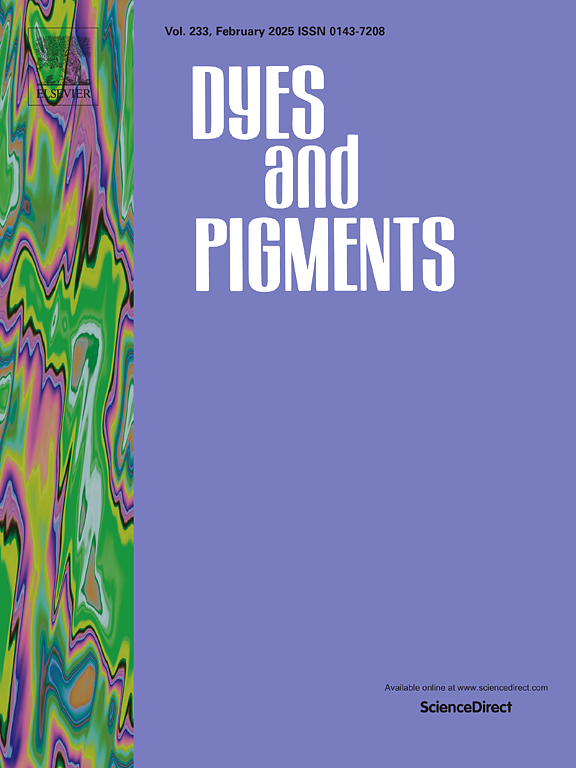Synthesis and characterization of dendritic nonlinear optical chromophores based on double-donor structures and isolation groups
IF 4.1
3区 工程技术
Q2 CHEMISTRY, APPLIED
引用次数: 0
Abstract
Two dendritic nonlinear optical chromophores A-B based on the bis(3-hydroxypiperidin)aniline and bis(N-ethyl-N-hydroxyethyl)aniline donors and three 3,5-bis(benzyloxy)benzoic acid derivative isolation groups were designed and synthesized. The UV absorption, density functional theory (DFT) calculations, thermal stability, and electro-optic activity of these chromophores were systematically investigated in this article. The chromophores A-B exhibited good thermal stability at decomposition temperatures (Td) greater than 260 °C. Most importantly, steric hindrance groups could effectively reduce dipole-dipole interactions between molecules and improve the conversion efficiency of the first-order hyperpolarizability (β) of chromophores into large electro-optic (EO) coefficients (r33). A large r33 value of 236 p.m./V have been achieved for chromophore B. And the poling efficiency (2.79 ± 0.08 nm2/V2) of Chromophore B at 1310 nm was much higher than that of chromophore with single donor with similar structure.
求助全文
约1分钟内获得全文
求助全文
来源期刊

Dyes and Pigments
工程技术-材料科学:纺织
CiteScore
8.20
自引率
13.30%
发文量
933
审稿时长
33 days
期刊介绍:
Dyes and Pigments covers the scientific and technical aspects of the chemistry and physics of dyes, pigments and their intermediates. Emphasis is placed on the properties of the colouring matters themselves rather than on their applications or the system in which they may be applied.
Thus the journal accepts research and review papers on the synthesis of dyes, pigments and intermediates, their physical or chemical properties, e.g. spectroscopic, surface, solution or solid state characteristics, the physical aspects of their preparation, e.g. precipitation, nucleation and growth, crystal formation, liquid crystalline characteristics, their photochemical, ecological or biological properties and the relationship between colour and chemical constitution. However, papers are considered which deal with the more fundamental aspects of colourant application and of the interactions of colourants with substrates or media.
The journal will interest a wide variety of workers in a range of disciplines whose work involves dyes, pigments and their intermediates, and provides a platform for investigators with common interests but diverse fields of activity such as cosmetics, reprographics, dye and pigment synthesis, medical research, polymers, etc.
 求助内容:
求助内容: 应助结果提醒方式:
应助结果提醒方式:


